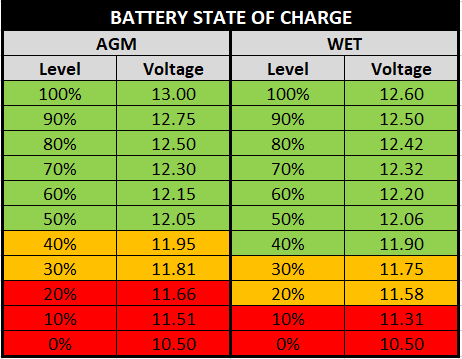Barrie
Senior Member
- Joined
- May 23, 2018
- Messages
- 195
- Location
- Canada
- Vessel Name
- GYPSY
- Vessel Make
- Mariner 37 PH aka Helmsman 38
I have 870 amp hour wet house batteries new last year connected to a generous solar system and the batteries are also charged when connected to shore power.
My MPPT solar charge controller has a meter that shows battery percentage. Over night, with just the fridge running the percentage drops to 56 but the battery voltage remains constant at 12.6 to 12.7. By 11am the next day, the solar has brought the percent back up to 100. The meter at this point is showing between 13 to 14 volts going through the system. Today I tested the system buy shutting down everything and I watch the % drop like an elevator.
I find this baffling and want to understand if this sudden drop in percent is worth worrying about or do I ignore it. The % reading was my way of understanding how much "gas is in the tank" so to speak.
Many thanks in advance for your insight. Barrie
My MPPT solar charge controller has a meter that shows battery percentage. Over night, with just the fridge running the percentage drops to 56 but the battery voltage remains constant at 12.6 to 12.7. By 11am the next day, the solar has brought the percent back up to 100. The meter at this point is showing between 13 to 14 volts going through the system. Today I tested the system buy shutting down everything and I watch the % drop like an elevator.
I find this baffling and want to understand if this sudden drop in percent is worth worrying about or do I ignore it. The % reading was my way of understanding how much "gas is in the tank" so to speak.
Many thanks in advance for your insight. Barrie


